Abstract
1. In spontaneously breathing, anaesthetized rats, a study was made of the effects upon the graded cardiovascular responses to systemic hypoxia (inspiratory fractional O2 concentration, Fi, O2: 0.15, 0.12, 0.08, 0.06) of maintaining arterial CO2 pressure (Pa,CO2) at the air-breathing level by adding CO2 to the inspirate (eucapnic hypoxia), rather than allowing Pa,CO2 to fall (hypocapnia hypoxia). 2. At each Fi,O2, maintenance of eucapnia significantly reduced the increase in respiratory frequency, but significantly accentuated the increase in tidal and minute volume: as a result the fall in Pa,O2 at each Fi,O2 was significantly reduced. 3. Concomitantly, maintenance of eucapnia reduced the increase in heart rate (HR) and fall in arterial pressure (ABP), the effects being significant at Fi,O2 0.08 and/or 0.06. There was also a tendency for the increases in renal and femoral vascular conductances (RVC, FVC) to be reduced; at Fi,O2 0.06 mean increases from control were 2 +/- 10 vs. 16 +/- 7% (eucapnia vs. hypocapnia) for RVC, and 62 +/- 11 vs. 106 +/- 27% for FVC. 4. As maintenance of eucapnia reduced the fall in Pa,O2 at each Fi,O2, the above results were also considered as a function of Pa,O2. Then, maintenance of eucapnia had similar significant effects on the changes in respiration and HR as described above and reduced the mean increase in RVC (16 +/- 11 vs. 23 +/- 10%, at Pa,O2 31 mmHg, which was attained at Fi,O2 0.06 with eucapnia and 0.08 with hypocapnia). However, maintenance of eucapnia had no effect on the falls in ABP and accentuated the mean increase in FVC (74.9 +/- 13 vs. 57 +/- 10% at Pa,O2 31 mmHg). 5. These findings indicate that, in the rat, the hypocapnia that accompanies the hyperventilatory response to systemic hypoxia facilitates the tachycardia and may accentuate the renal vasodilation, but attenuate the hypoxia-induced vasodilatation in skeletal muscle. Possible mechanisms are discussed.
Full text
PDF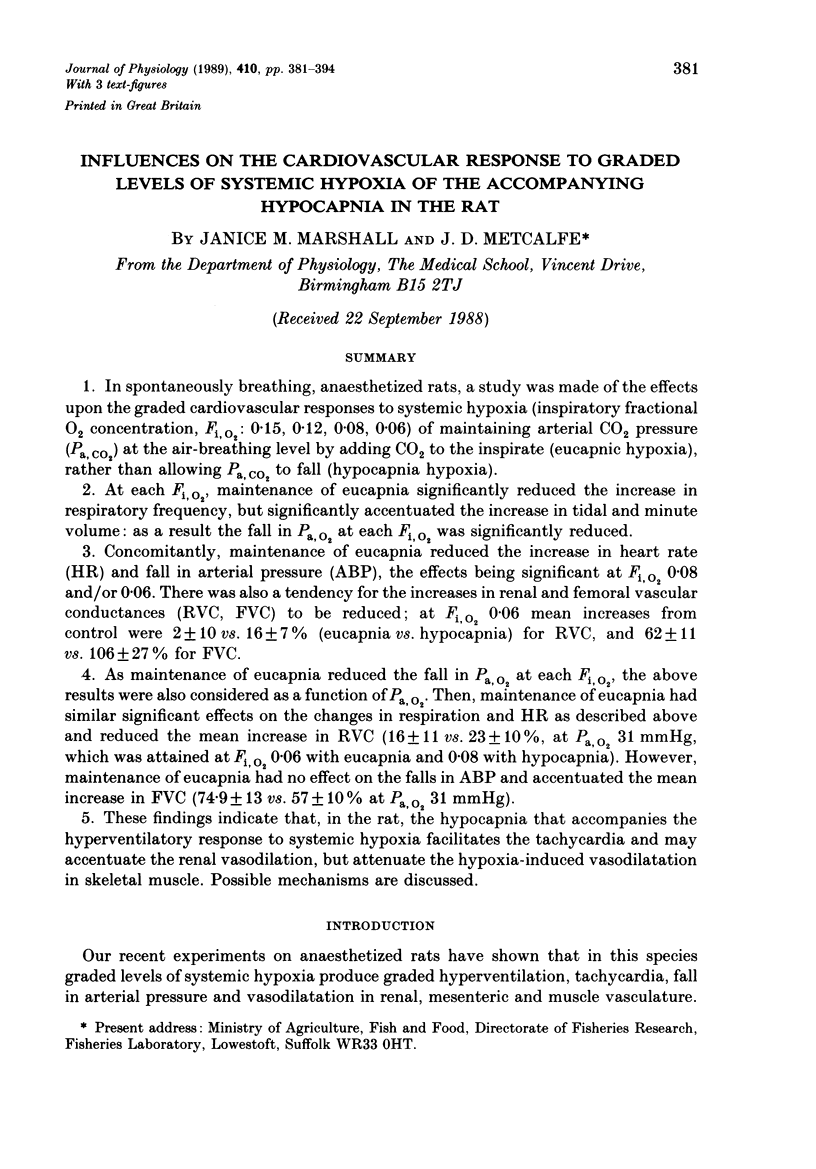
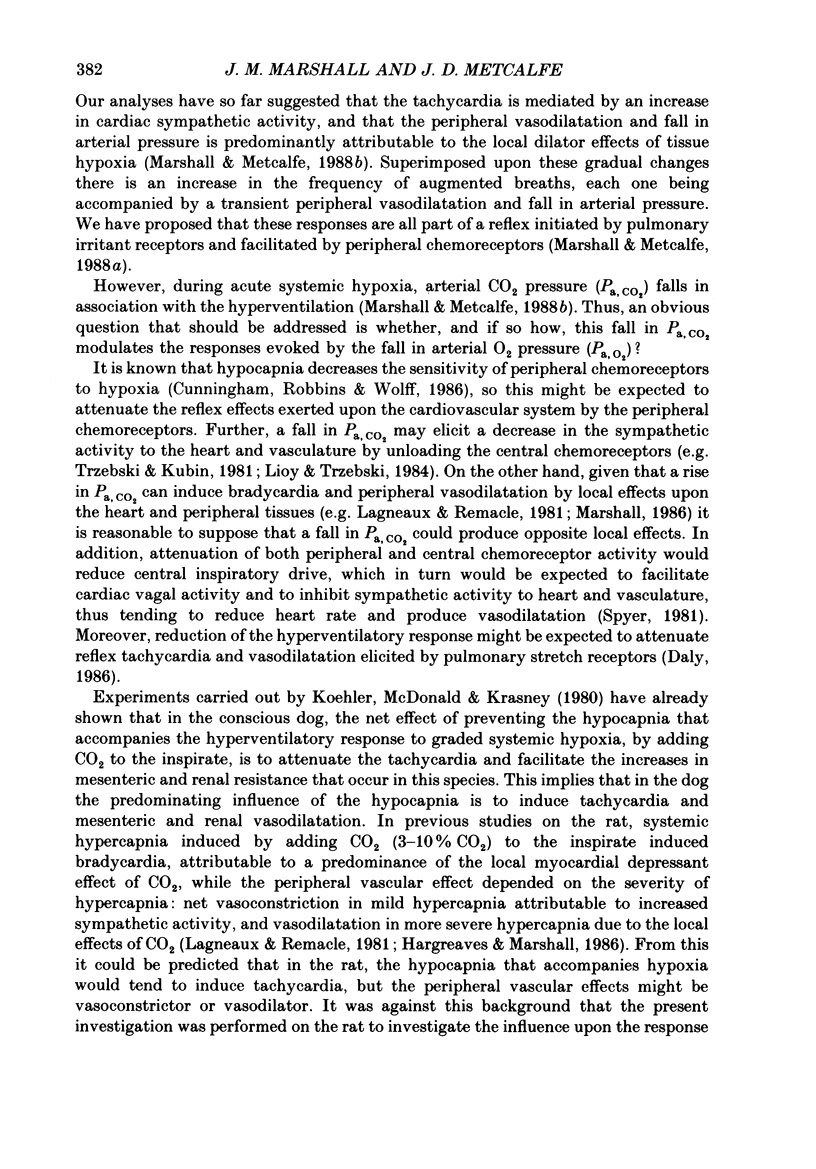

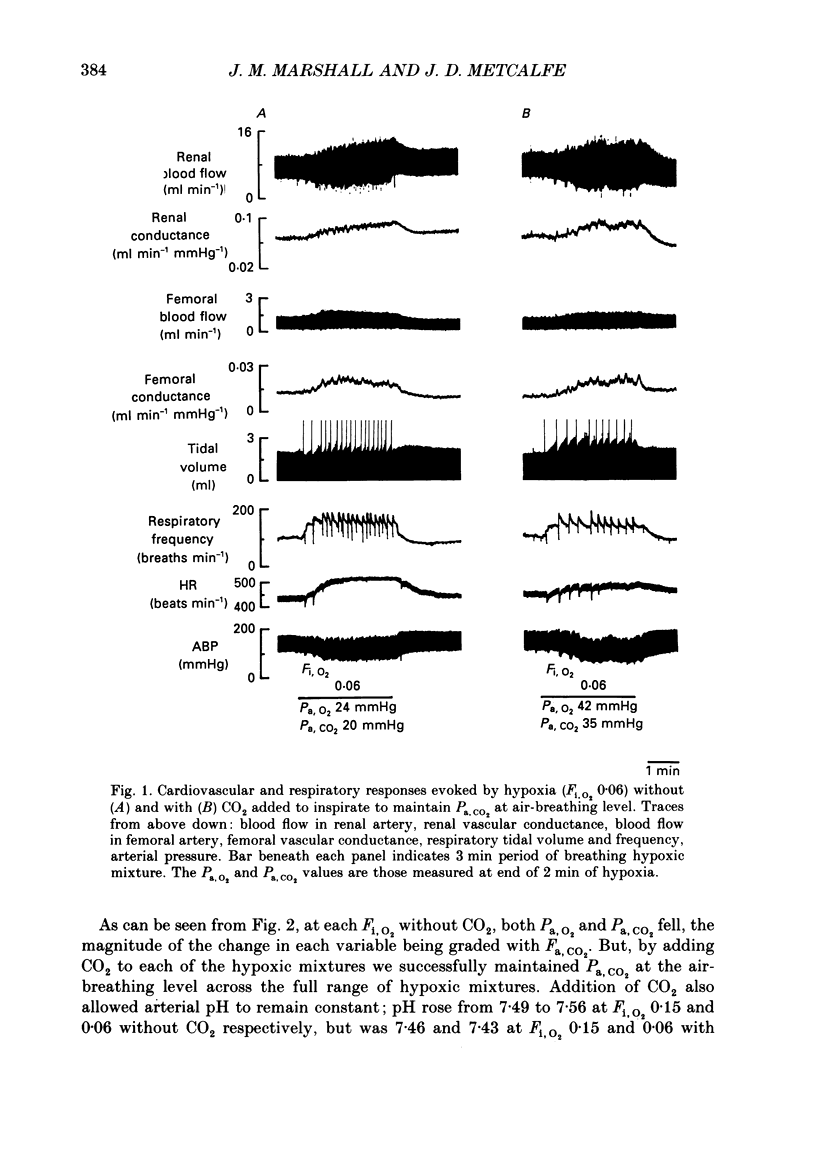
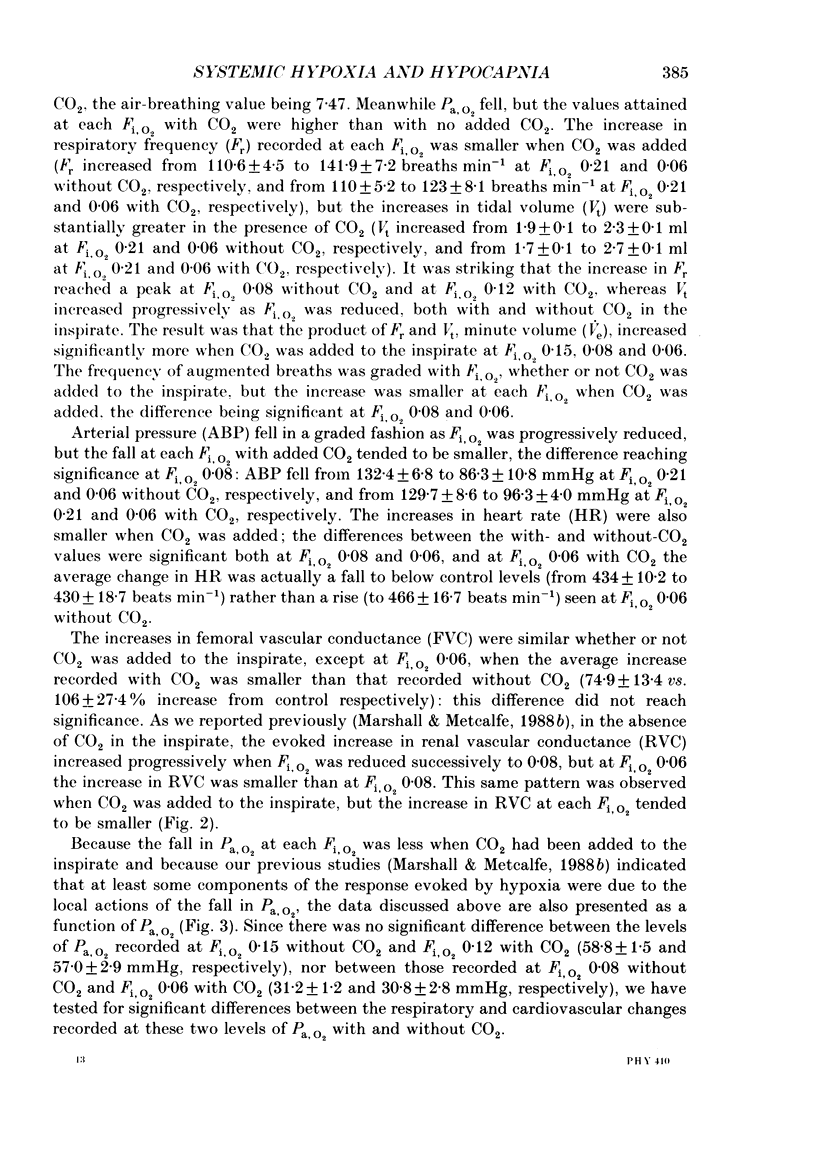
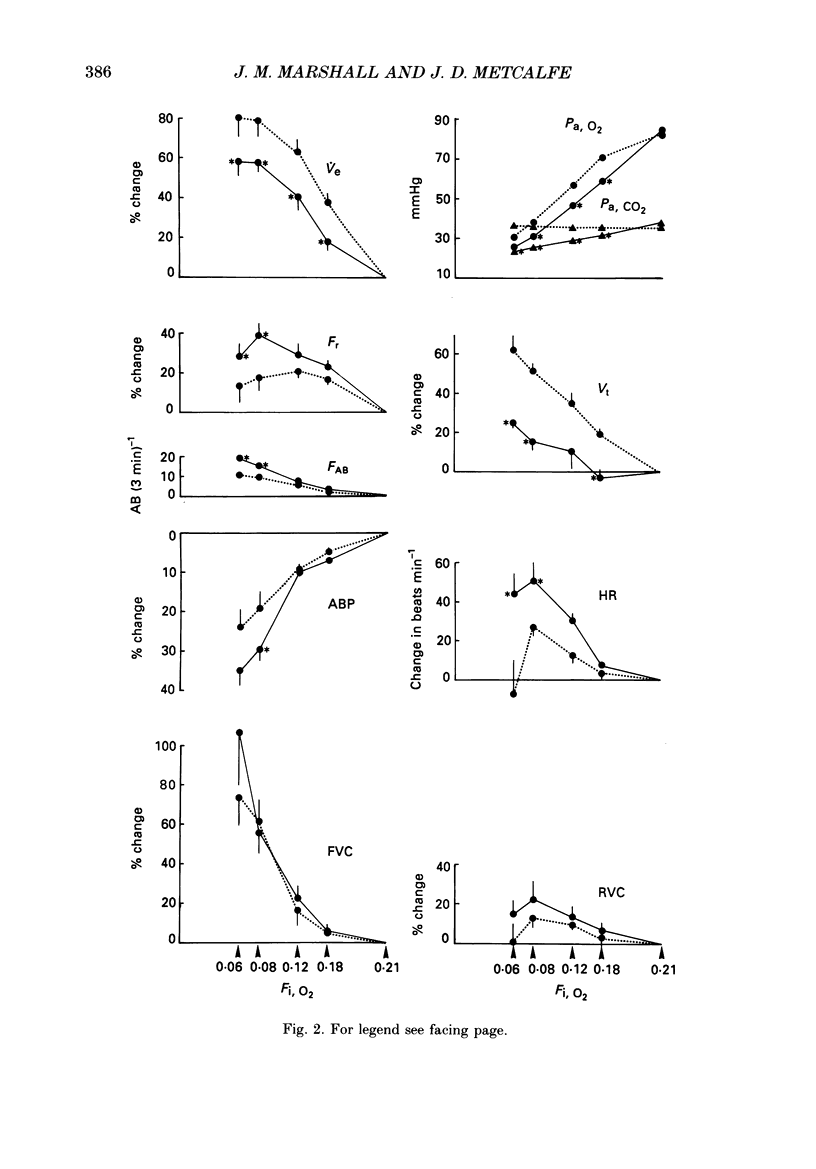
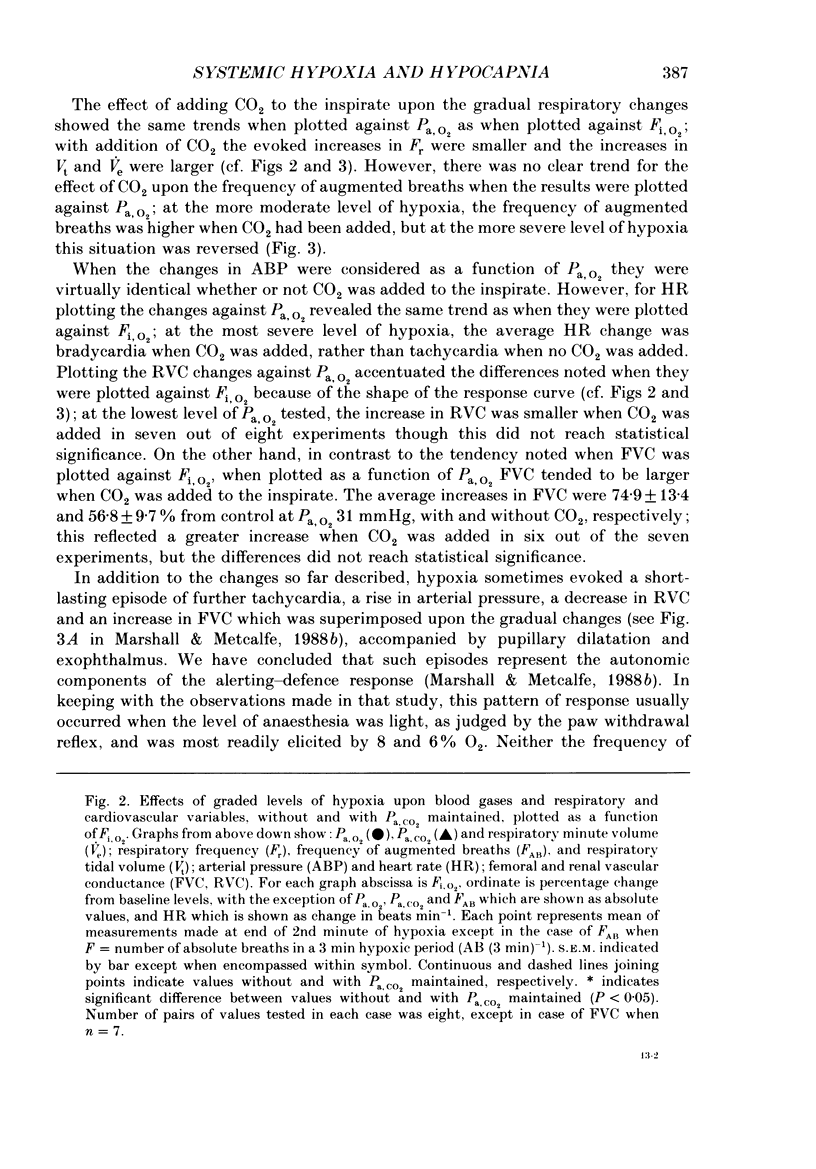
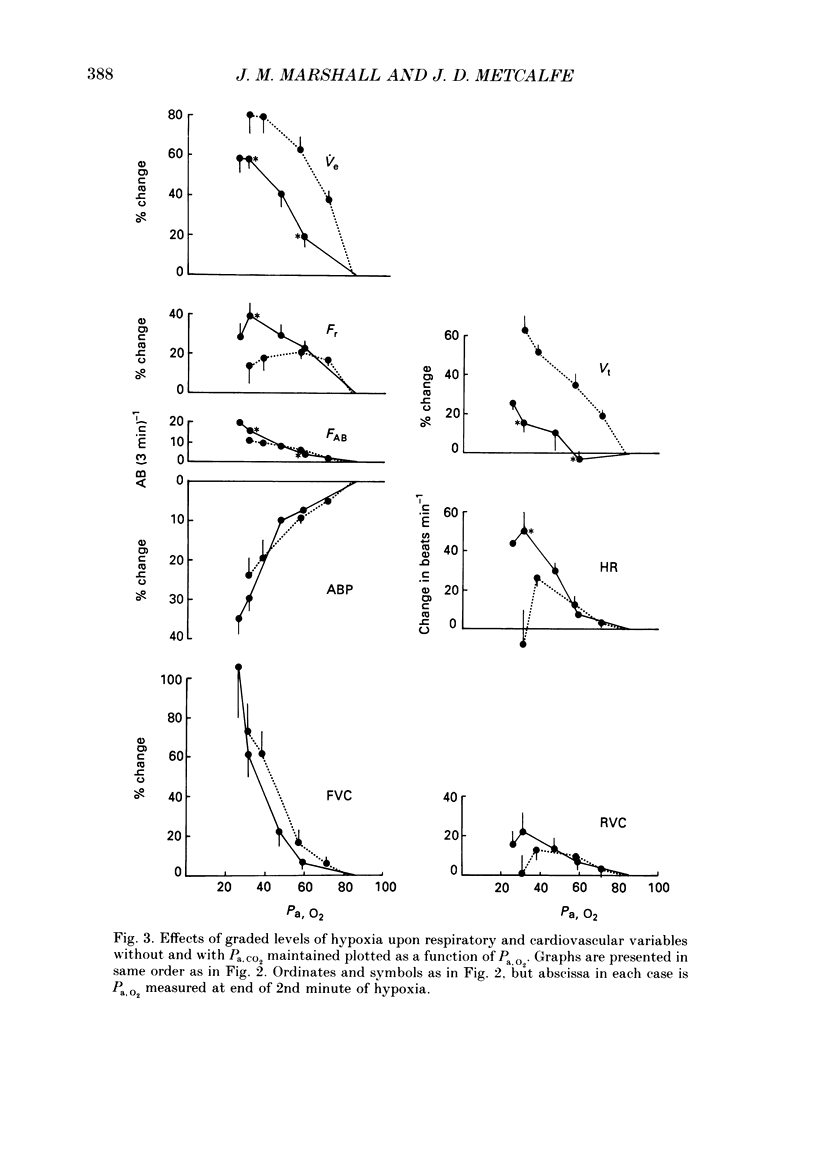
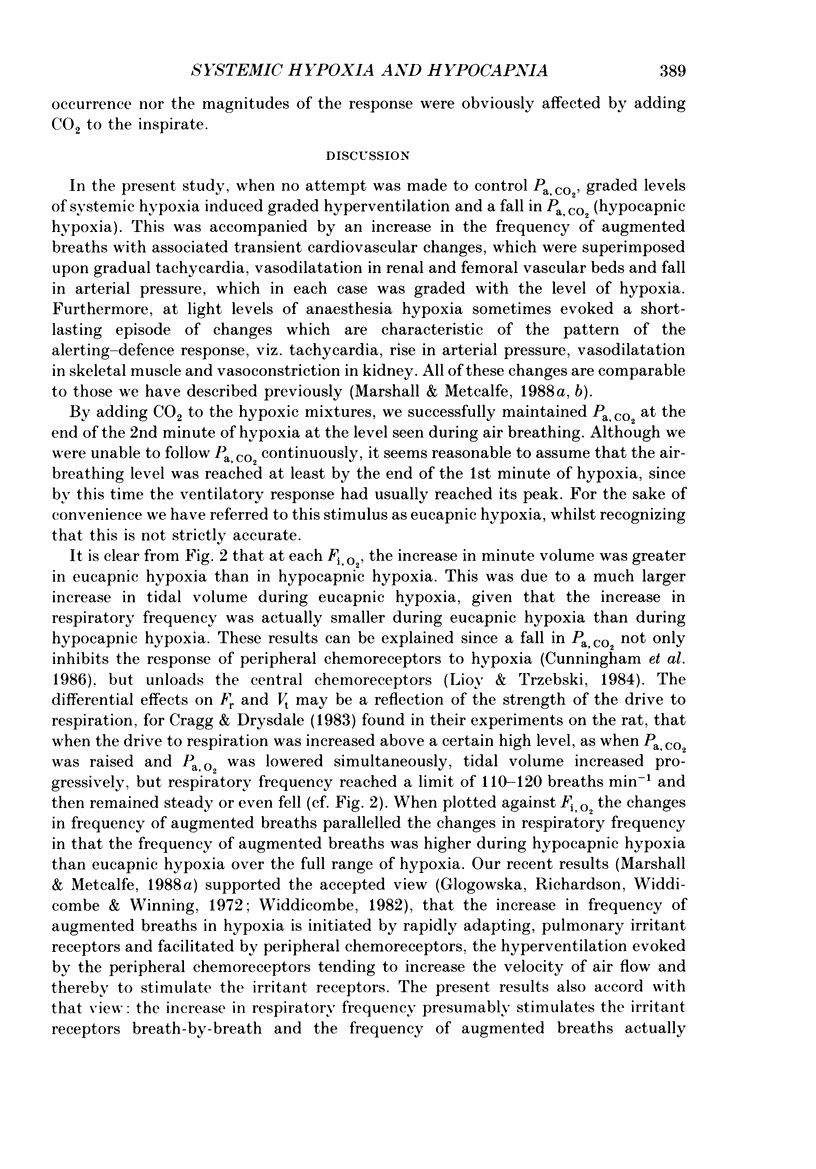
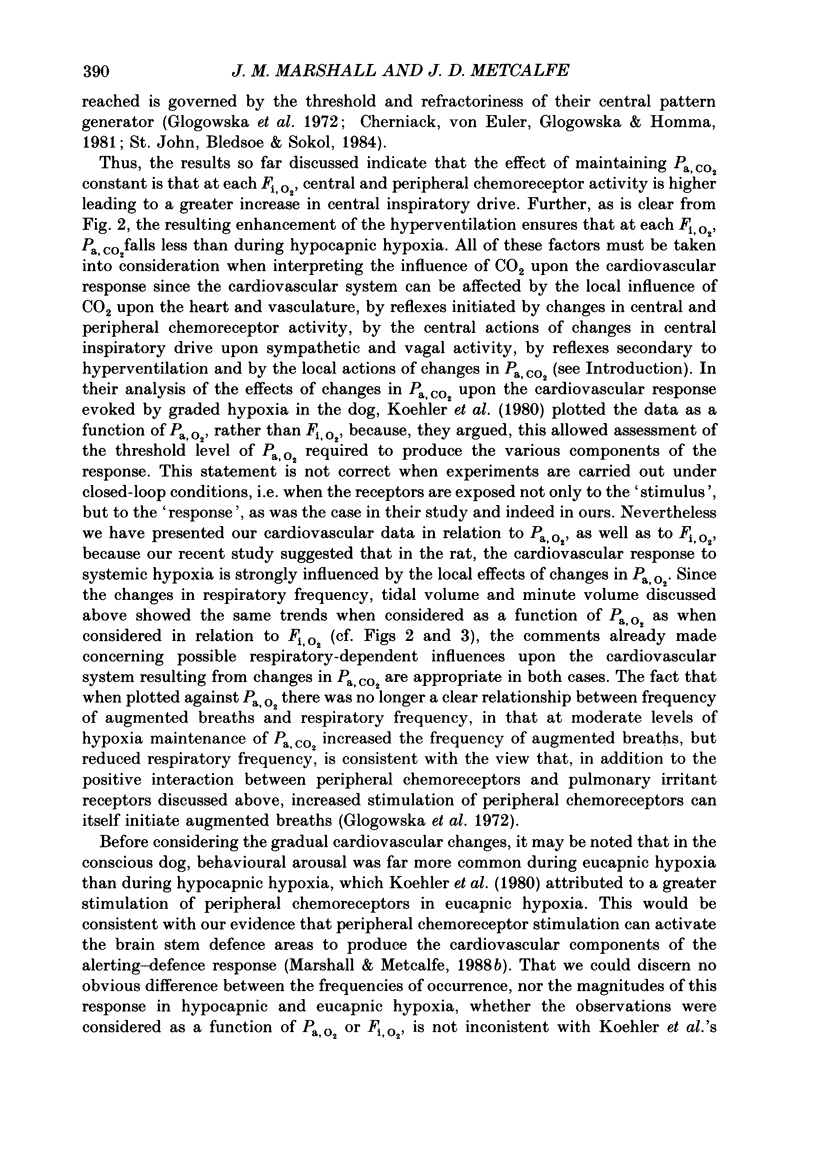
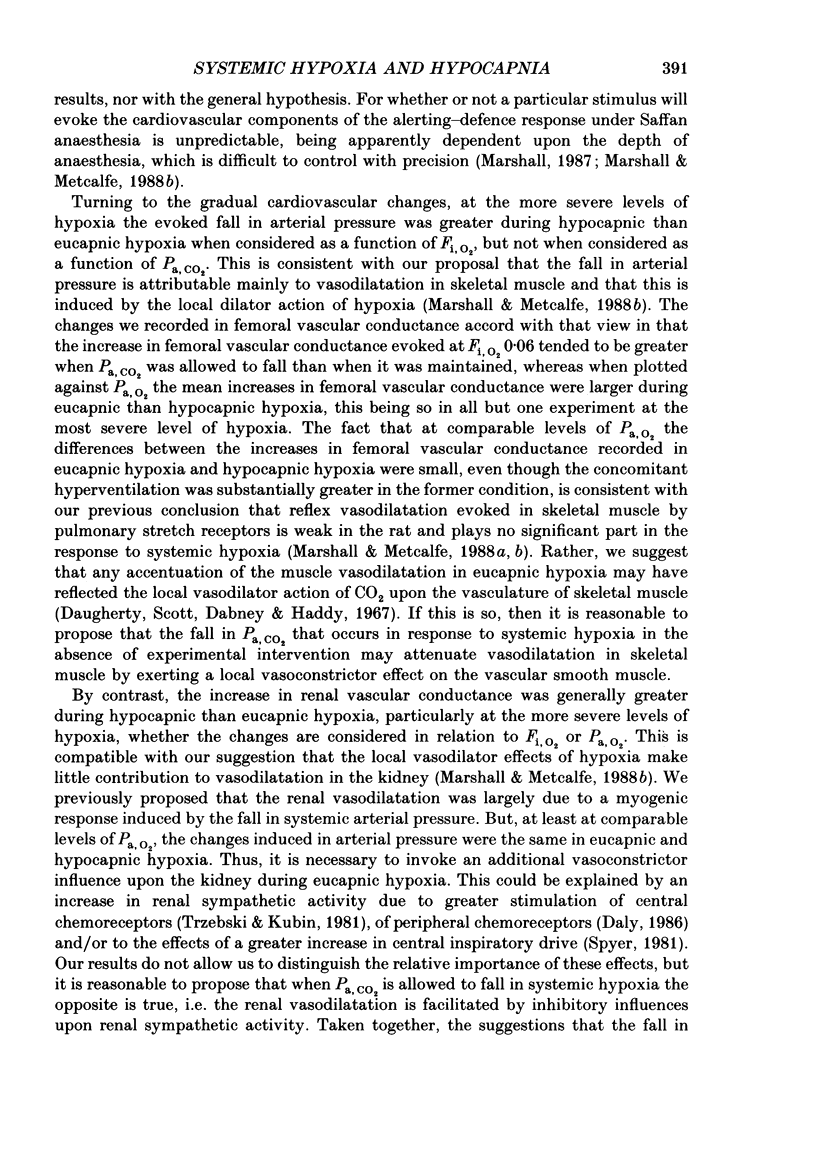
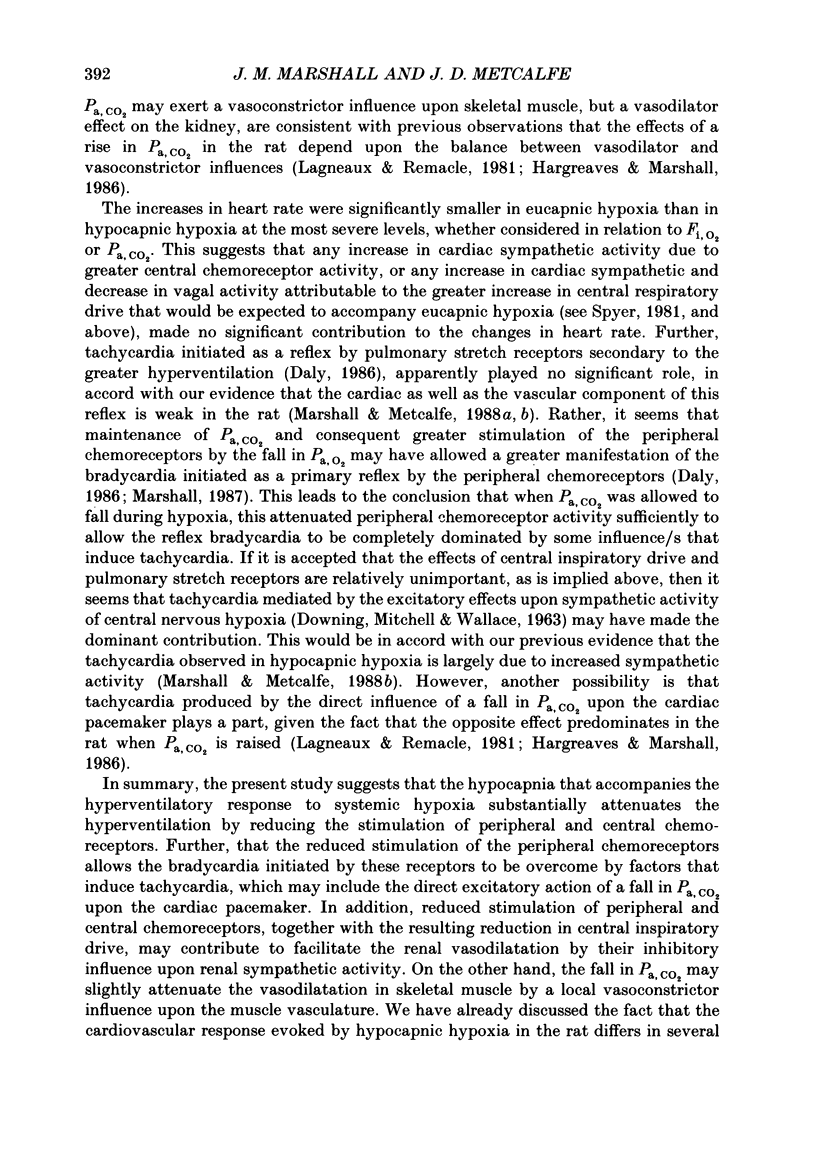

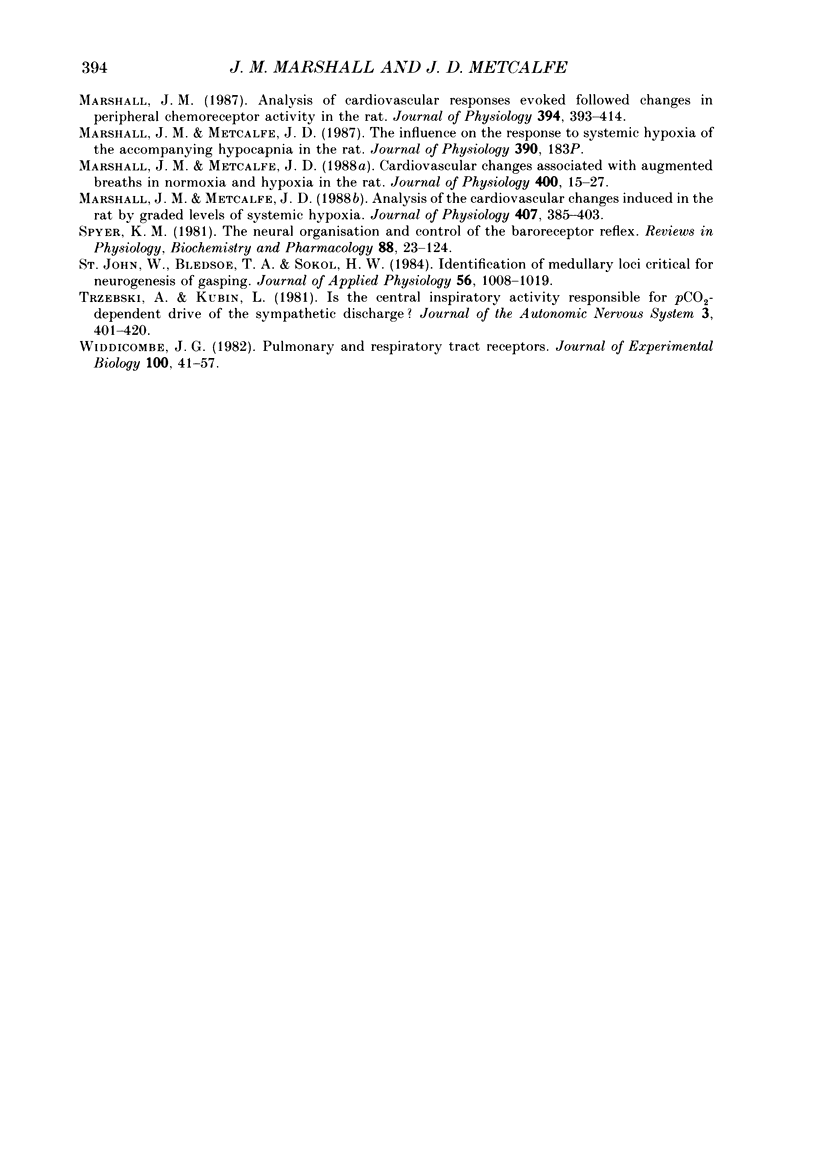
Selected References
These references are in PubMed. This may not be the complete list of references from this article.
- Cherniack N. S., von Euler C., Głogowska M., Homma I. Characteristics and rate of occurrence of spontaneous and provoked augmented breaths. Acta Physiol Scand. 1981 Mar;111(3):349–360. doi: 10.1111/j.1748-1716.1981.tb06747.x. [DOI] [PubMed] [Google Scholar]
- Cragg P. A., Drysdale D. B. Interaction of hypoxia and hypercapnia on ventilation, tidal volume and respiratory frequency in the anaesthetized rat. J Physiol. 1983 Aug;341:477–493. doi: 10.1113/jphysiol.1983.sp014818. [DOI] [PMC free article] [PubMed] [Google Scholar]
- Daugherty R. M., Jr, Scott J. B., Dabney J. M., Haddy F. J. Local effects of O2 and CO2 on limb, renal, and coronary vascular resistances. Am J Physiol. 1967 Nov;213(5):1102–1110. doi: 10.1152/ajplegacy.1967.213.5.1102. [DOI] [PubMed] [Google Scholar]
- Glogowska M., Richardson P. S., Widdicombe J. G., Winning A. J. The role of the vagus nerves, peripheral chemoreceptors and other afferent pathways in the genesis of augmented breaths in cats and rabbits. Respir Physiol. 1972 Oct;16(2):179–196. doi: 10.1016/0034-5687(72)90050-3. [DOI] [PubMed] [Google Scholar]
- Koehler R. C., McDonald B. W., Krasney J. A. Influence of CO2 on cardiovascular response to hypoxia in conscious dogs. Am J Physiol. 1980 Oct;239(4):H545–H558. doi: 10.1152/ajpheart.1980.239.4.H545. [DOI] [PubMed] [Google Scholar]
- Lagneaux D., Remacle R. Réactions cardio-vasculaires du rat à l'hypercapnie ventilatoire. Arch Int Physiol Biochim. 1981 May;89(2):175–182. doi: 10.3109/13813458109073997. [DOI] [PubMed] [Google Scholar]
- Lioy F., Trzebski A. Pressor effect of CO2 in the rat: different thresholds of the central cardiovascular and respiratory responses to CO2. J Auton Nerv Syst. 1984 Mar;10(1):43–54. doi: 10.1016/0165-1838(84)90066-3. [DOI] [PubMed] [Google Scholar]
- Marshall J. M. Analysis of cardiovascular responses evoked following changes in peripheral chemoreceptor activity in the rat. J Physiol. 1987 Dec;394:393–414. doi: 10.1113/jphysiol.1987.sp016877. [DOI] [PMC free article] [PubMed] [Google Scholar]
- Marshall J. M., Metcalfe J. D. Analysis of the cardiovascular changes induced in the rat by graded levels of systemic hypoxia. J Physiol. 1988 Dec;407:385–403. doi: 10.1113/jphysiol.1988.sp017422. [DOI] [PMC free article] [PubMed] [Google Scholar]
- Marshall J. M., Metcalfe J. D. Cardiovascular changes associated with augmented breaths in normoxia and hypoxia in the rat. J Physiol. 1988 Jun;400:15–27. doi: 10.1113/jphysiol.1988.sp017107. [DOI] [PMC free article] [PubMed] [Google Scholar]
- Marshall J. M. Modulation of the centrally-evoked visceral alerting/defence response by changes in CSF pH at the ventral surface of the medulla oblongata and by systemic hypercapnia. Pflugers Arch. 1986 Jul;407(1):46–54. doi: 10.1007/BF00580719. [DOI] [PubMed] [Google Scholar]
- Spyer K. M. Neural organisation and control of the baroreceptor reflex. Rev Physiol Biochem Pharmacol. 1981;88:24–124. [PubMed] [Google Scholar]
- St John W. M., Bledsoe T. A., Sokol H. W. Identification of medullary loci critical for neurogenesis of gasping. J Appl Physiol Respir Environ Exerc Physiol. 1984 Apr;56(4):1008–1019. doi: 10.1152/jappl.1984.56.4.1008. [DOI] [PubMed] [Google Scholar]
- Trzebski A., Kubin L. Is the central inspiratory activity responsible for pCO2-dependent drive of the sympathetic discharge? J Auton Nerv Syst. 1981 Apr;3(2-4):401–420. doi: 10.1016/0165-1838(81)90078-3. [DOI] [PubMed] [Google Scholar]
- Widdicombe J. G. Pulmonary and respiratory tract receptors. J Exp Biol. 1982 Oct;100:41–57. doi: 10.1242/jeb.100.1.41. [DOI] [PubMed] [Google Scholar]


